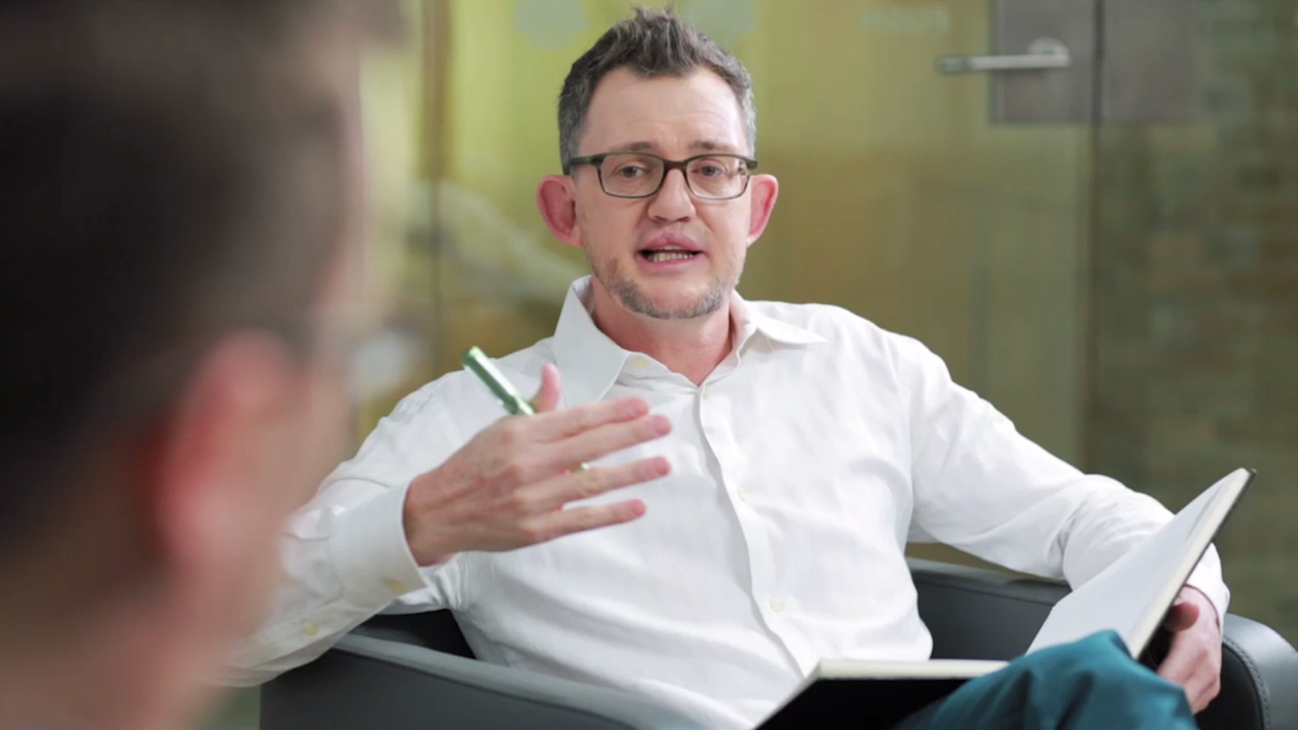Your organization is set up to do Good Work–solid, reliant, efficient, work that delivers the next quarter’s numbers. That’s important. But it’s not enough. Michael Bungay Stanier knows that for organizations to continue to thrive and succeed, the people and teams in those organizations need to do more Great Work: the work that has impact, the work that has meaning, the work that makes a difference. In his new book, The Coaching Habit: Say Less, Ask More & Change The Way Your Lead Forever, Michael shows leaders how to make a difference in their employees’ lives through being a better mentor. In this recent column for The Globe and Mail, Michael looks at “the right way to ask a question” and create a positive impact on your leadership:
In the book Drive, Dan Pink sets out the factors that actually spark motivation: mastery, autonomy and purpose. If you’re a manager and a leader who would like to motivate rather than not, a simple (yet surprisingly difficult) strategy is to ask more questions. A good question well asked increases autonomy certainly, mastery probably, and purpose possibly.
Not all questions are created equal, of course. “Are you kidding me?” for instance probably doesn’t move things forward. But having a few powerful and open questions that you use regularly will increase the impact of your leadership.
However, even the best of questions can come undone by the way they’re asked. Whatever your favourite questions are, these four tips will help you ask them more effectively.
Start soft “No one,” Monty Python reminded us, “expects the Spanish Inquisition.” And no one likes getting questioned by the Spanish Inquisition, although that does appear to be the inspiration for many managers’ approaches.
If you’re seeking not to reveal incompetence but to help uncover wisdom, you often want to ratchet down the pressure, not increase it. The phrase, “Out of curiosity…” is a powerful way to start a question. It makes the conversation feel safer and more collegial, not Me vs. You.
Ask it once Have you ever been a victim of a drive-by questioning? When someone fires a string of questions at you without allowing you to answer any of them. It can leave you feeling overwhelmed and confused. What do they want? Where do I start?
If you’re asking the question, give yourself a heartbeat or three to identify the one question you think would be most useful to answer. You don’t have to have it ready to go as soon as the other person finishes talking; in fact, waiting just a moment will actually give your question more weight when you ask it. When you have it, ask it once and ask it directly. And then be quiet while they answer.
Listen up Many of us have mastered the art of FAL: Fake Active Listening. You do a good job at looking interested – you’re nodding away like a bobblehead doll, maintaining eye contact and making small grunting noises of encouragement. Meantime, in your head you are either just waiting for them to stop talking so you can say the thing you need to tell them, or you are thinking of something else entirely: Do I need to pick up something for dinner? Dd I reply to that email? Does my bum look big in this?
Can you remember a time when someone actually did give you their complete attention and listened fully to what you had to say? It’s quite rare, but it’s powerful when it happens. It’s a moment of trust, safety and engagement. When you listen fully, that’s something that you can provide for others.
Add AWE
You ask a question, you get an answer. And for most of us, that’s the sum of it. Either the conversation is done, or that first answer triggers you into offering your own thoughts, opinion, advice and/or general pontifications.
But someone’s first answer is rarely their only answer and often not their best answer. It’s just their first answer. That’s why you want to get into the habit of asking The Best Coaching Question in the World: “And what else?” It’s literally AWE-some.
Dan and Chip Heath in Switch quote a study that showed that decisions based on a binary choice (“Should we do this or not do it?”) were predominant in organizations … and had a 52 per cent failure rate. Adding a single addition option (“Should we do this or that or not?”) dropped the failure rate to 32 per cent. “And what else?” creates more options that lead to better choices that lead to better decisions that have most positive outcomes.
“And what else?” also has a benefit that goes beyond just better decisions. It stops you from leaping in to start fixing things. If you’re asking questions you’re not offering advice. And while there’s a place for advice of course, it’s not needed nearly as often as you might think.
What was most useful here for you?
Asking this question is the perfect way to finish the article and any conversations you have, with direct reports, bosses, customers or clients. You can be sure that the conversation you thought was breathtakingly valuable was not understood at that level at all by the other person. Asking this question helps them (and you) extract the value.
“When will the rhetorical questions end?” asked George Carlin. When will the good question well asked begin? ask I.
Michael Bungay Stainer/April, 2016

